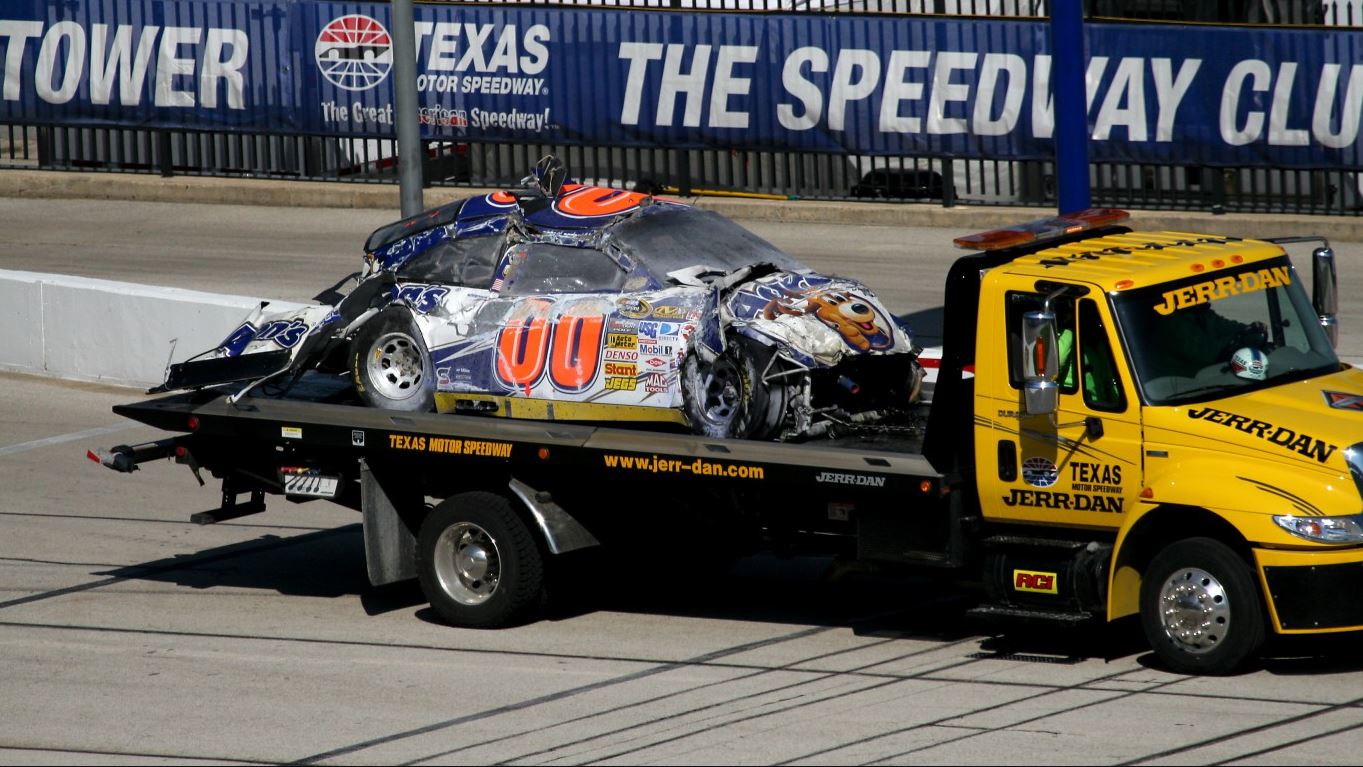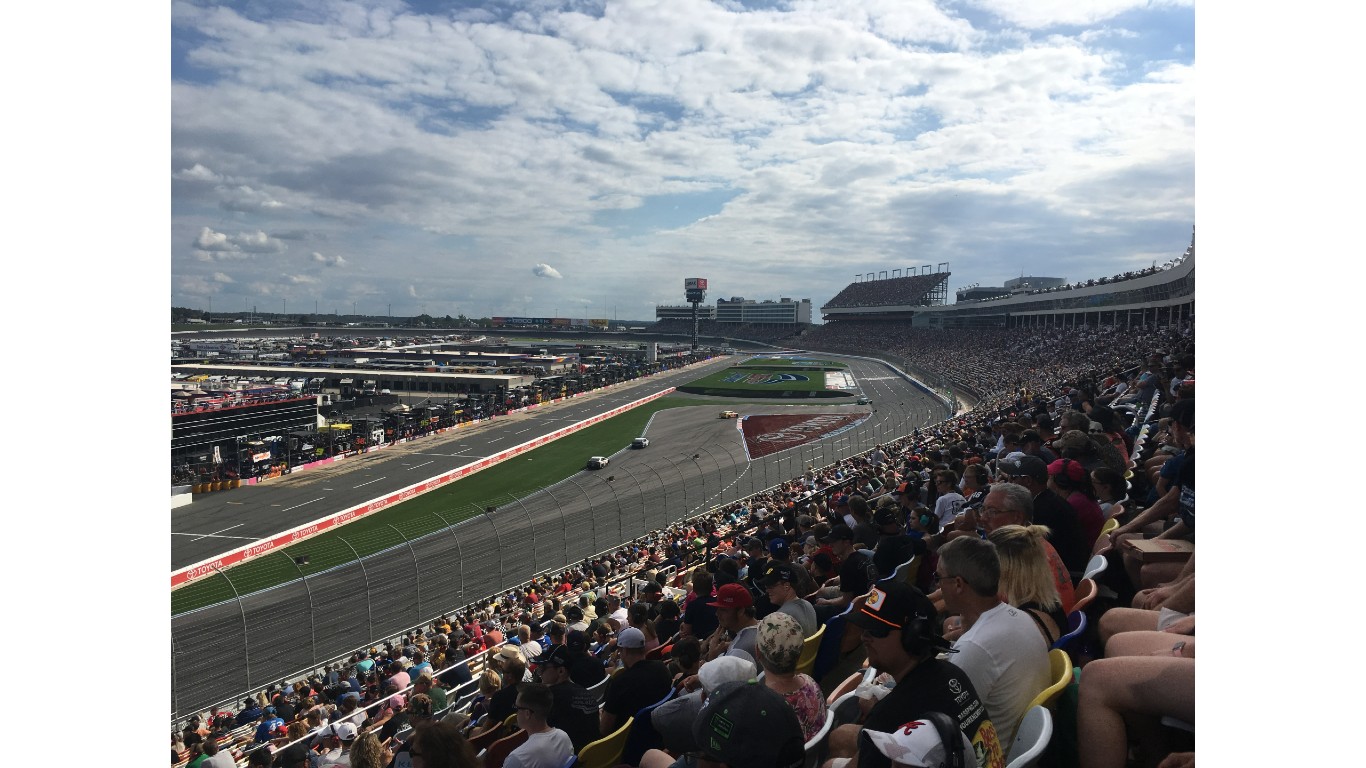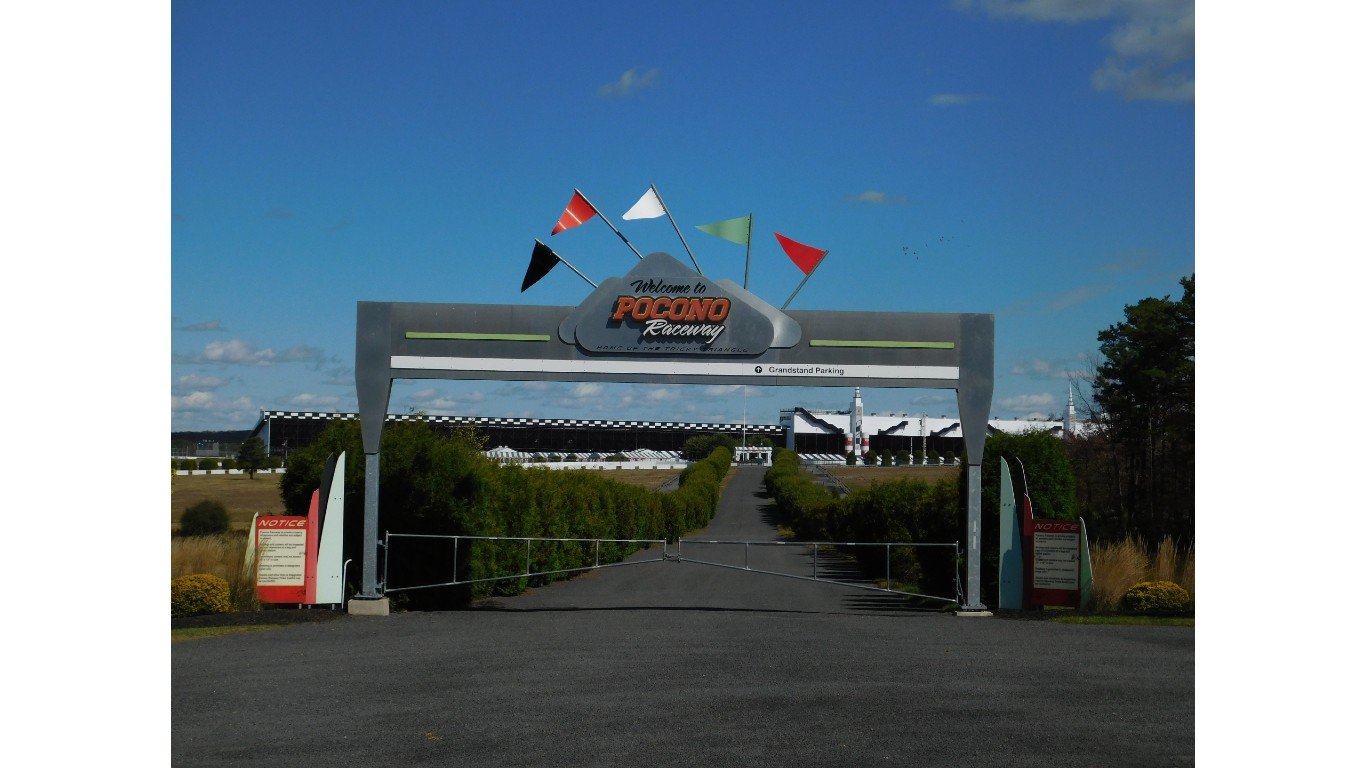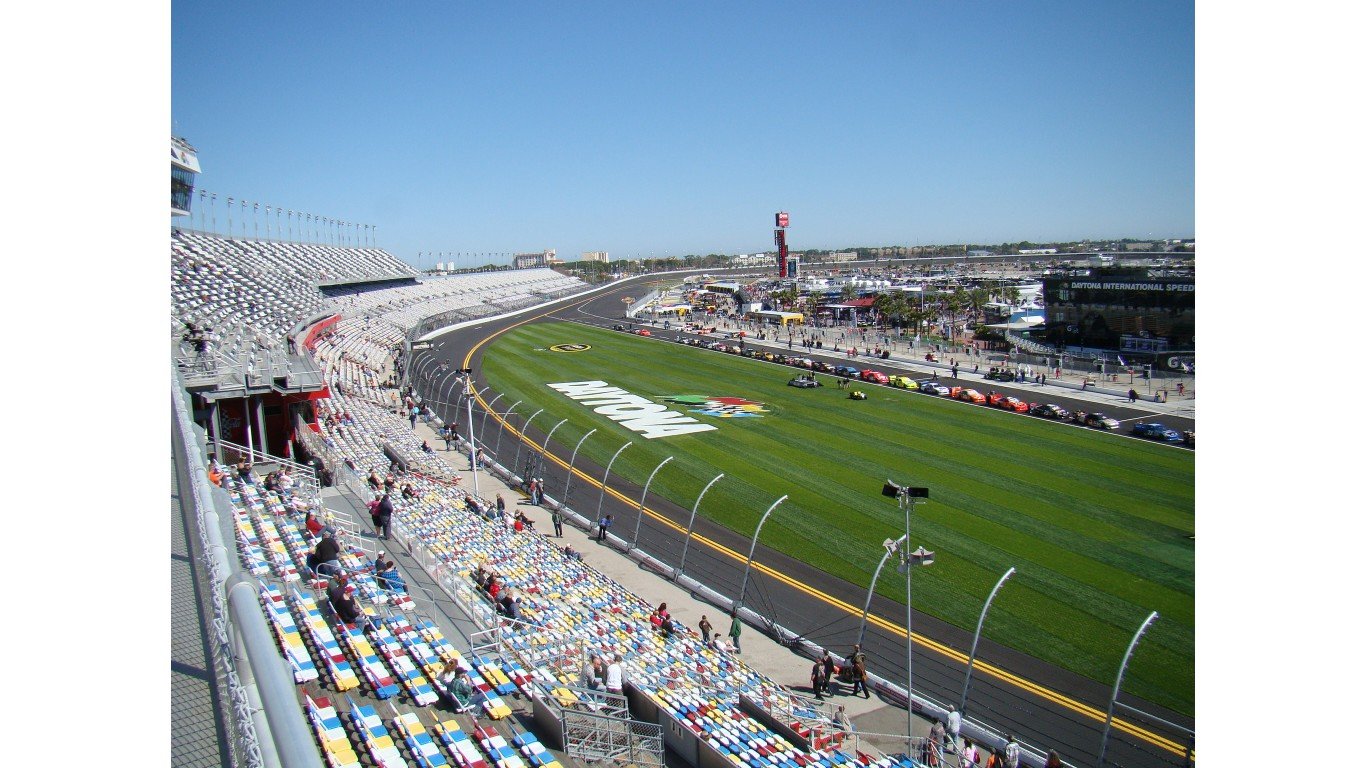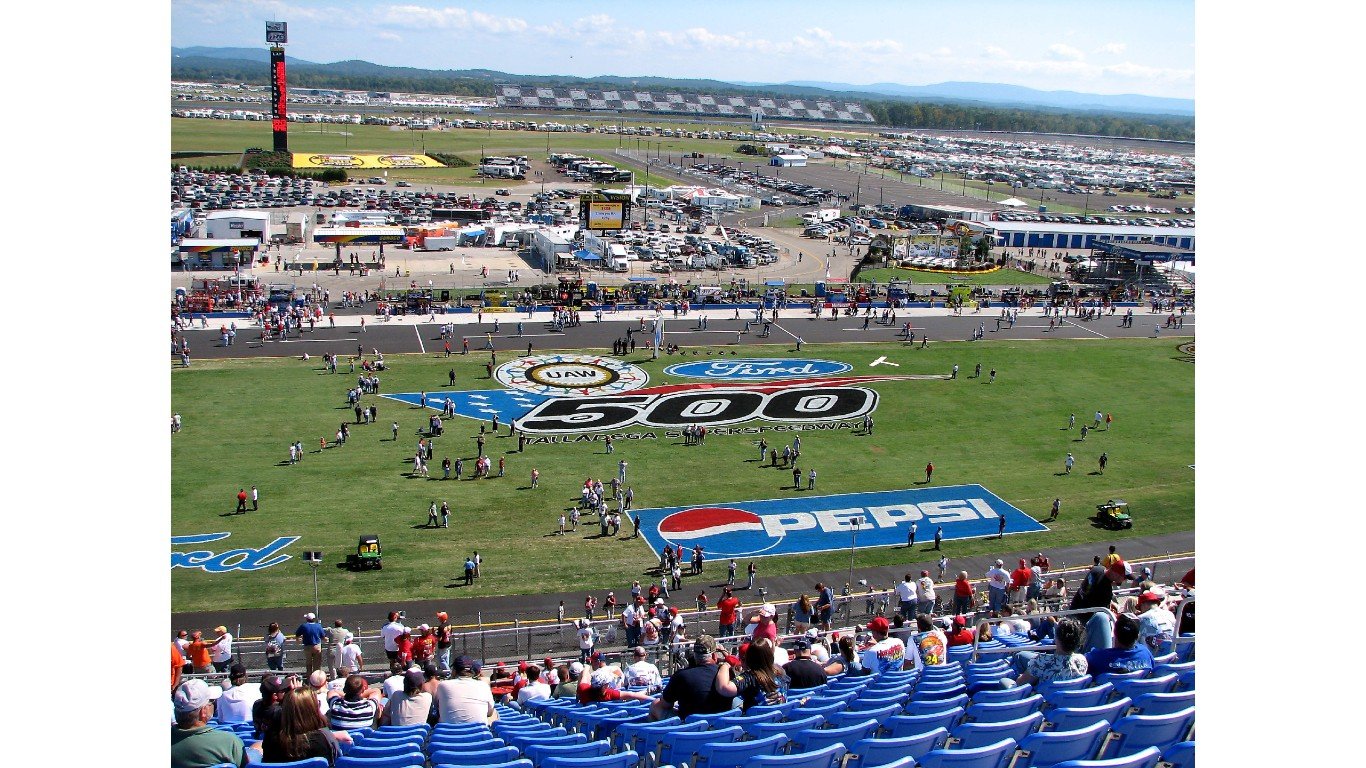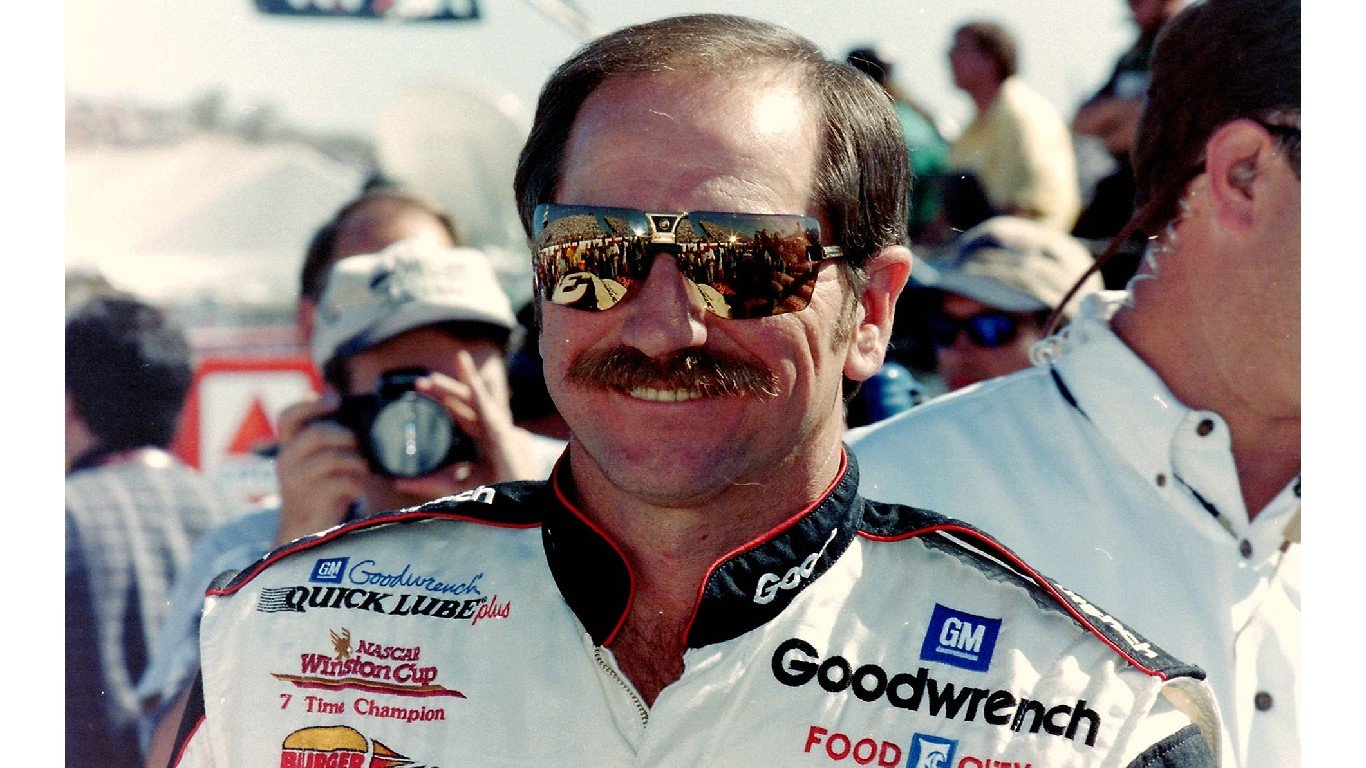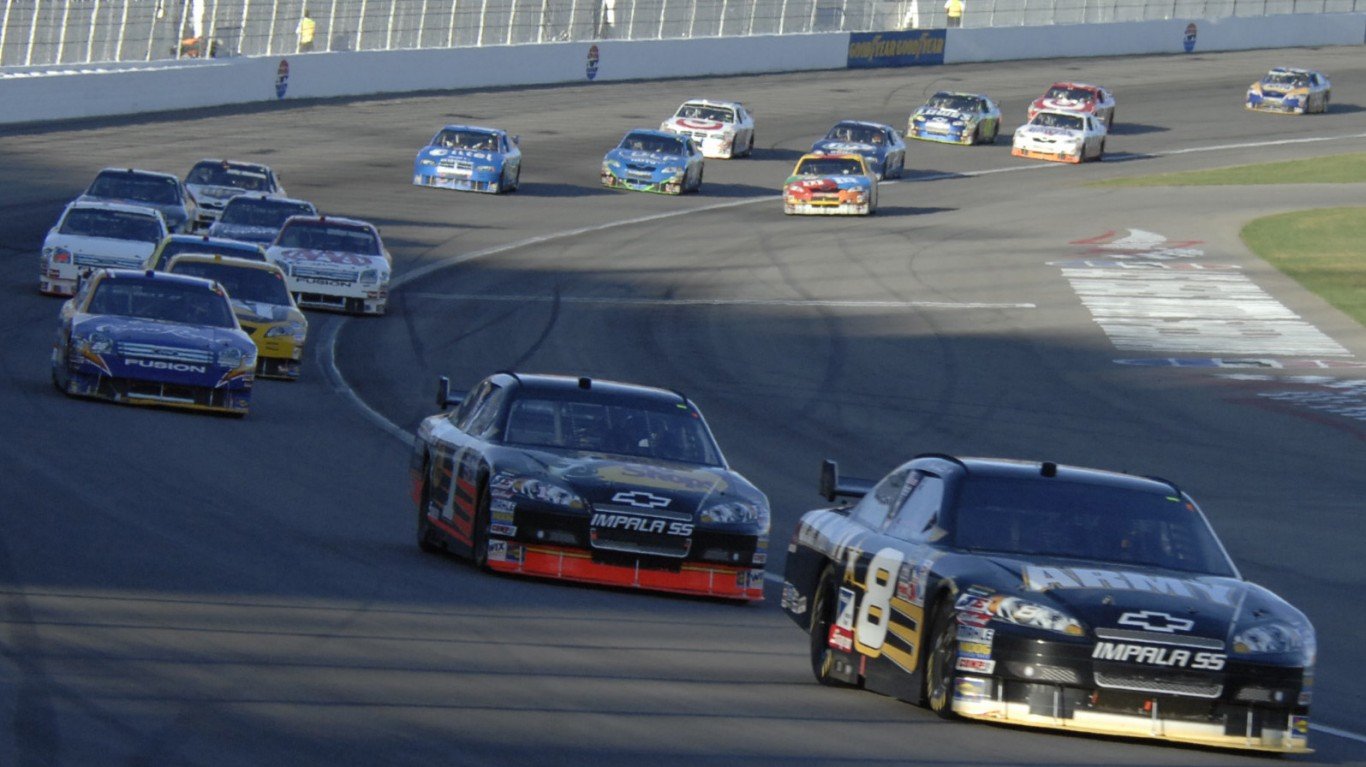The National Association for Stock Car Racing, better known as NASCAR, was founded in 1948 in Daytona Beach, Fla., by racer and race-track promoter Bill France, Sr. It had immense appeal in the South in its first decades, but over time has attracted a national following.
While many attend to appreciate the skills of the drivers motoring at speeds of nearly 200 mph, there are those who go hoping to see “the big one,” a massive pileup of vehicles. (These incidents, of course, are much worse than the 20 kinds of car accidents Americans get in the most.)
To compile a list of the worst crashes in NASCAR history, 24/7 Tempo used reference materials from sources such as racing websites like Hotcars and The Motor Digest, as well as ESPN, the New York Times and the Los Angeles Times.
Stock car racing has its roots in the Appalachian region, with moonshiners who drove souped-up cars to evade government revenue agents during the Great Depression. The cars eventually started racing at state fairs and local racetracks and found that their brand of hellbent driving could draw thousands of spectators. (For another variation on auto racing, see the most exciting races in Indy 500 history.)
NASCAR ruefully learned that racing could come at a hefty price. Pileups involving too many cars forced the organization to limit the number of vehicles. Tragedies involving car fires forced the organization to require drivers to wear fire-retardant clothing and for vehicles to have fire-extinguishing systems.
Horrific wrecks also have prompted NASCAR to install protective nets in all its racing cars for the safety of drivers and spectators. After a crash in 1987 at the Talladega Superspeedway, racing officials even mandated restrictor plates that regulate the speed of the vehicles.

1960: Daytona International Speedway
Race: Daytona Modified Sportsman Race
One of the earliest car wrecks was one of the biggest in NASCAR history. The Daytona Modified Sportsman Race at Daytona Beach Speedway in Florida involved 68 cars at the start of the race with a field that included future legends Junior Johnson, Ralph Earnhardt, and Edward Glenn “Fireball” Roberts. The crackup occurred on the fourth turn of the first lap, less than two minutes into the race.
It’s been called the worst wreck in NASCAR history, with 37 cars involved. There were no fatalities but some of the drivers were injured. The result forced NASCAR to reduce the number of cars in a race to 43. (Since 2016, that number has been reduced to 40.)
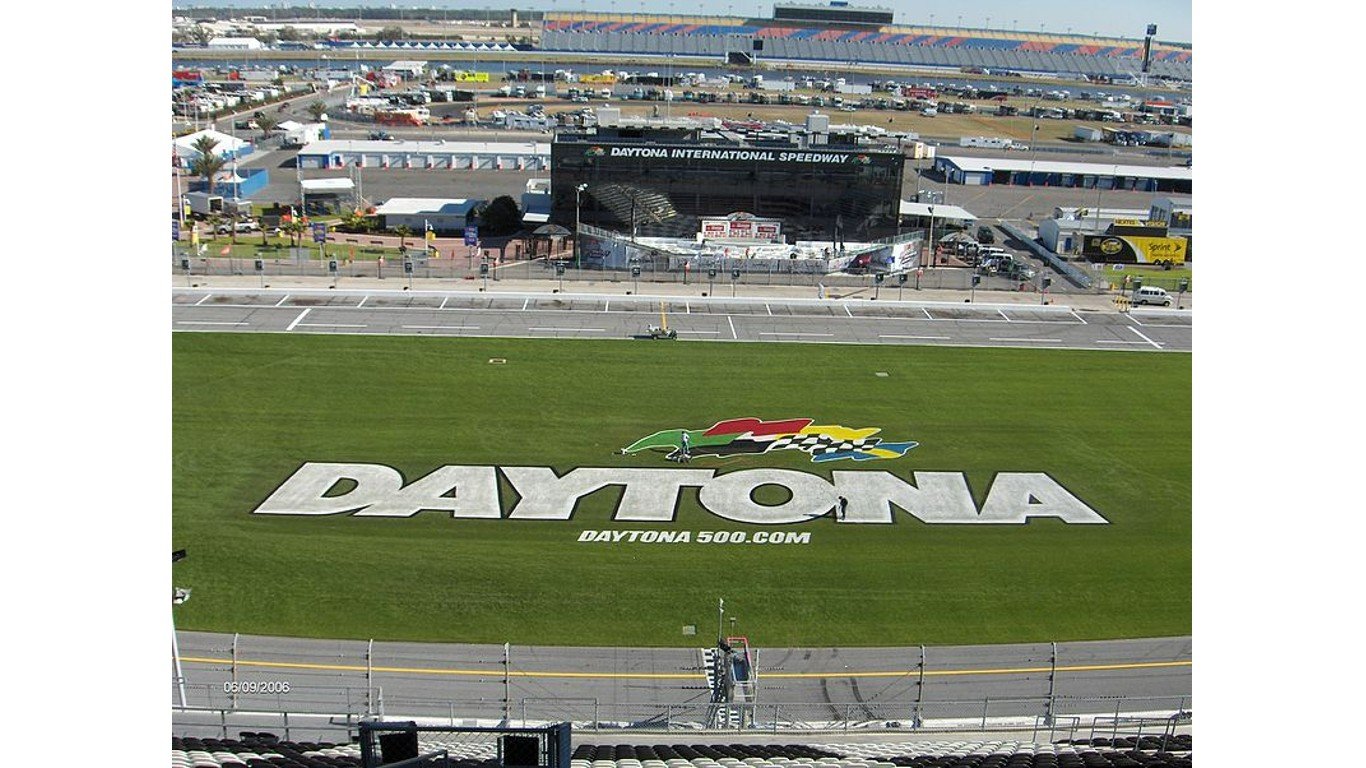
1961: Daytona International Speedway
Race: Qualifying race
Lee Petty, father of NASCAR legend Richard Petty, was competing in a qualifying race to determine the starting order for a major race at Daytona. Field leader Banjo Matthews spun out, triggering a series of events that led to Petty’s vehicle getting clipped by another car. Both drivers lost control and slammed through a guardrail, turning the vehicles into fiery wrecks. The drivers survived but Petty was in a coma for four days. It took him four months to rehab from his injuries.
1964: Charlotte Motor Speedway
Race: World 600
During the World 600-mile race at Charlotte Motor Speedway, Glenn (Fireball) Roberts was involved in a three-car wreck on the seventh lap, also involving Ned Jarrett and Robert (Junior) Johnson. Jarrett and Johnson both sustained minor injuries, but Roberts later died of complications from burns he received over 75% of his body. Prior to the tragedy, the 37-year-old Roberts had been the biggest career money earner in NASCAR history, winning 32 races and about $400,000 in his 15-year career.
The tragedy compelled NASCAR to require drivers to wear fire-retardant clothing and for cars to have fire-extinguishing systems.
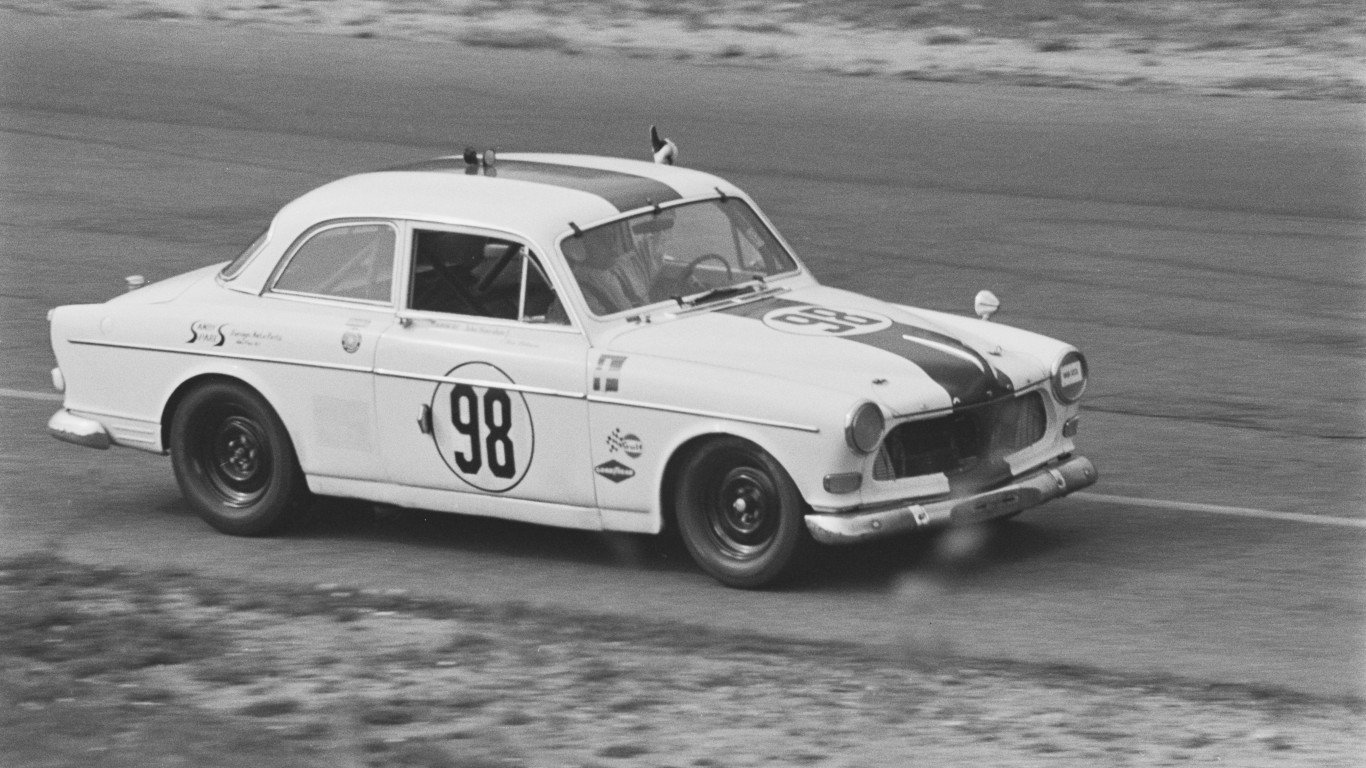
1970: Darlington Speedway
Race: Rebel 400
At Darlington Speedway in South Carolina, Richard Petty, not known to be risk averse, slammed into a retaining wall during the Rebel 400. His car flipped several times, then rolled over on the straightaway before settling on its roof. All the while spectators could see Petty’s arms flapping out the window.
The incident prompted NASCAR to install protective nets in all NASCAR racing cars to keep body parts from going out the windows in the event of a crash.
1980: Pocono Raceway
Race: Coca Cola 500
Ten years later, Richard Petty was involved in another crash, when he came out of the fearsome “Tunnel Turn” at Pocono, blew a tire, and soared into a wall. Several drivers just missed him, but Darrell Waltrip did not, hitting Petty on the driver’s side. Petty sustained a broken neck and his career subsequently took a downturn.
1984: Daytona International Speedway
Race: Busch Clash
The 1984 Busch Clash at Daytona saw Ricky Rudd involved in what could have been a horrific accident. His Ford was bumped from behind and he lost control of the vehicle. The vehicle went airborne, flew into the infield and past the track, and settled rightside up to the side of the track. Rudd was able to walk away from the crash with only a concussion.
1987: Talladega Superspeedway
Race: Winston 500
The crash involving Bobby Allison during the Winston 500 at Talladega Superspeedway in Alabama caused NASCAR to reassess its rules. During the race, Allison, driving at 212 miles per hour, tore up a wheel, soared into the protective railing, and spun around on the track. Other cars were involved in the mishap. Even though Allison was uninjured, some racing fans were hurt by debris. Recognizing the danger of unchecked vehicle speed, NASCAR mandated restrictor plates to regulate the speed of the vehicles.
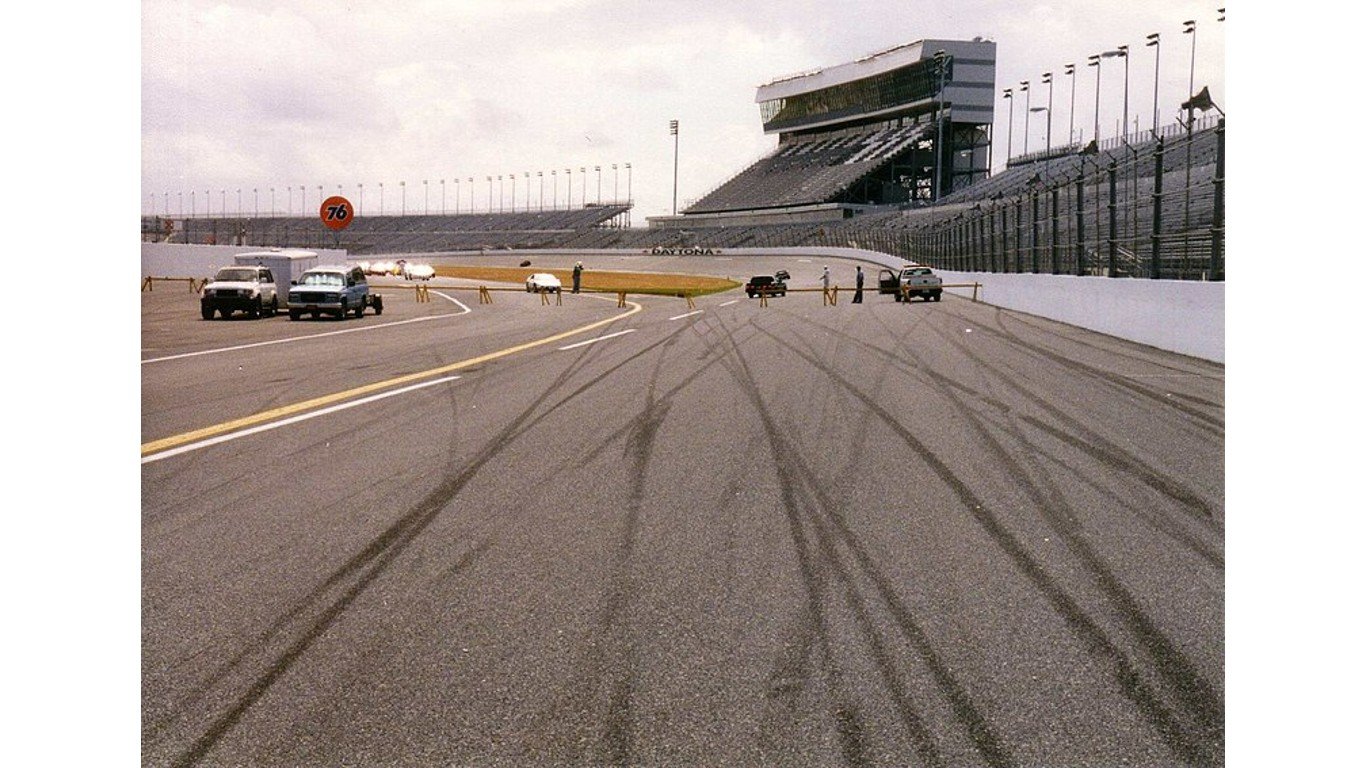
1988: Daytona International Speedway
Race: Daytona 500
Richard Petty was involved in yet another terrifying crash on the NASCAR circuit in 1988, on the same track on which his father had a terrible crackup in 1961. Petty, who had previously won the 500 seven times, was coming out of a turn on lap 106 when he was hit from behind. His car flipped end over end multiple times and then was hit by another driver after it came to rest. The car scattered debris all over the track. The force of the impact left Petty temporarily blind.

1990: Atlanta International Raceway
Race: Atlanta Journal 500
Tragedy occurred during the Atlanta Journal 500 at the Atlanta International Raceway when Ricky Rudd lost control of his car and spun into Bill Elliott’s vehicle that was stopped for a tire change. Mike Rich, Elliott’s tire changer, got pinned between the two cars and was killed. His death forced NASCAR to modify the speed limits in the pit area and crew were asked to wear protective gear.
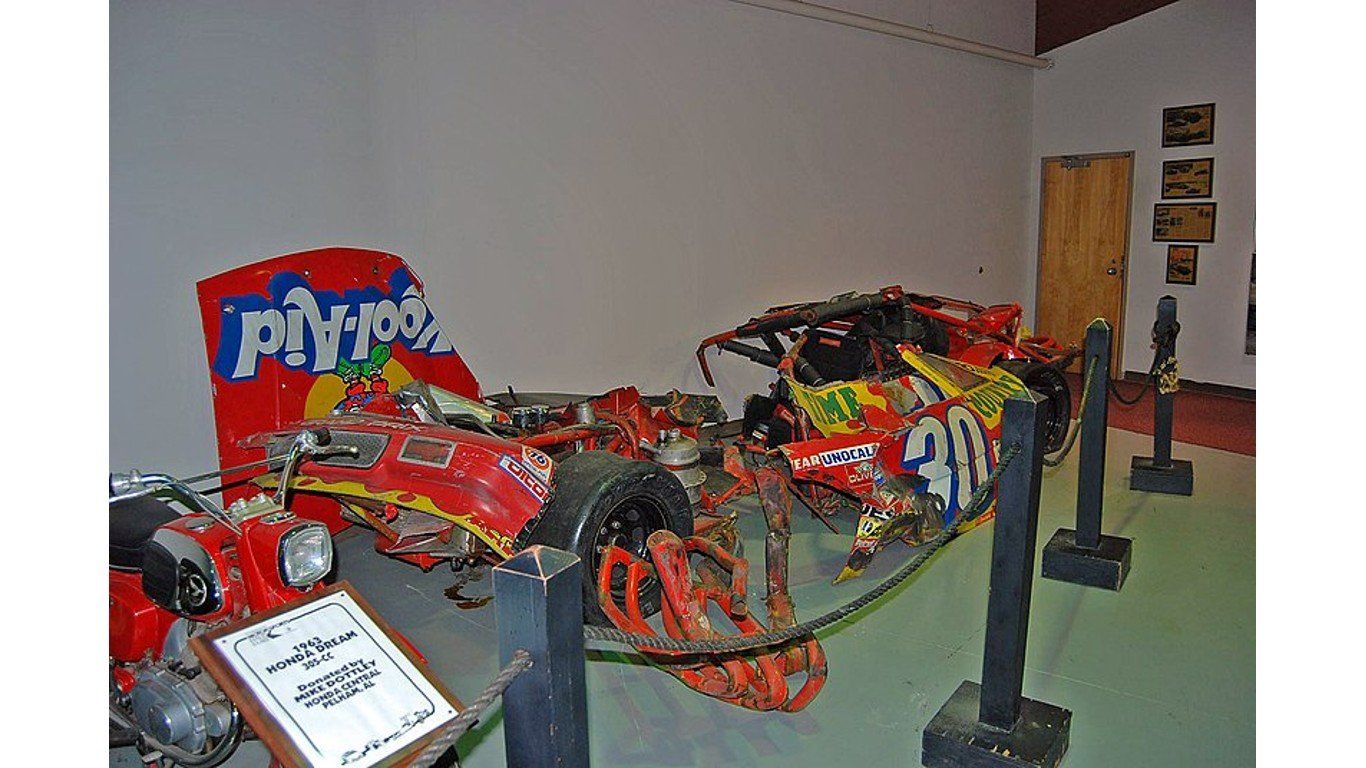
1990: Bristol Motor Speedway
Race: Budweiser 250
During the Budweiser 250 Grand National Race at Bristol Motor Speedway in Tennessee, Michael Waltrip got into a crash that he was lucky to survive. Waltrip was trying to pass Robert Pressley on the 170th lap when the two cars brushed against each other. It was enough to send Waltrip’s vehicle into a steel gate, and he pushed through into a concrete barrier and settled upside down. The impact nearly tore his car in two. Waltrip came away with several injuries.
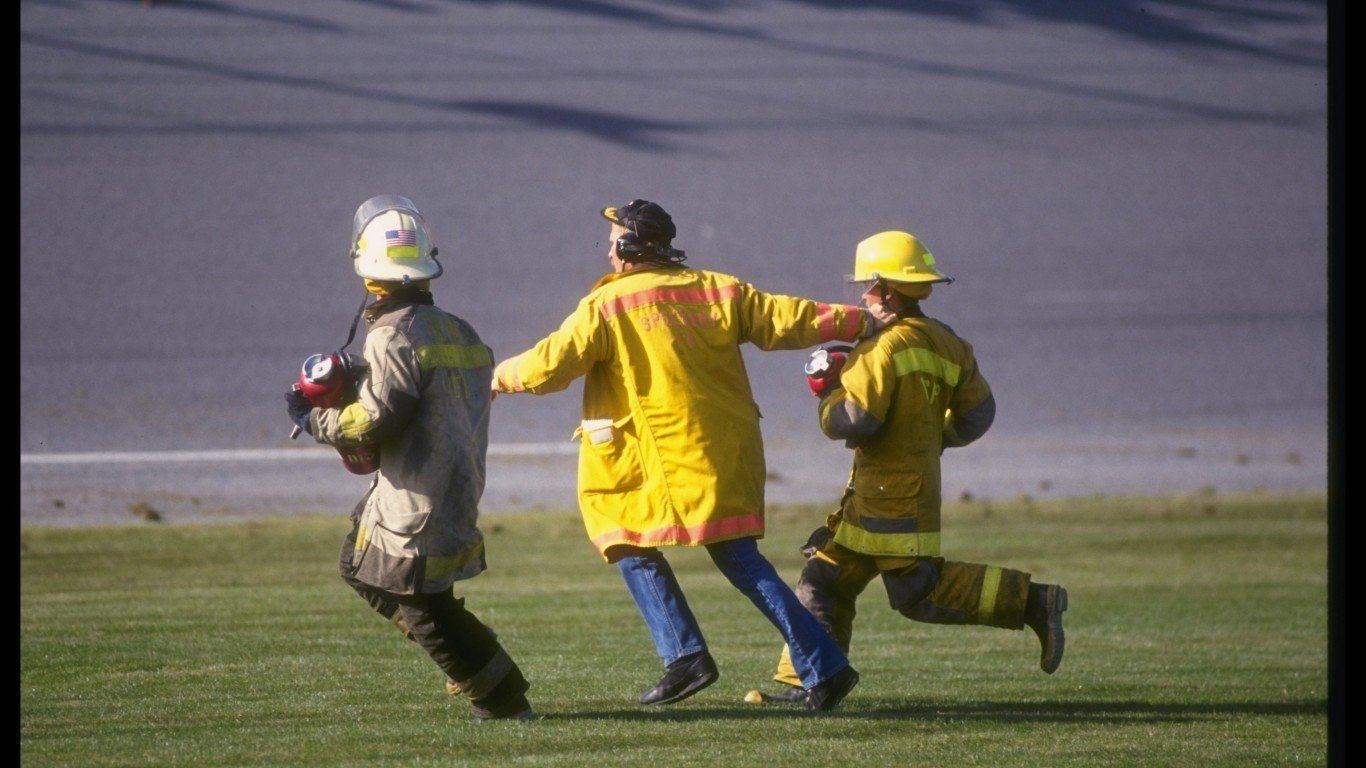
1991: Daytona International Speedway
Race: Daytona 500
Darrell Waltrip escaped serious injury a year after his brother Michael was nearly killed at Bristol Motor Speedway. During a scramble in the Dayton Pepsi 400, cars driven by Darrell and Joe Ruttman brushed against each other and both veered off into the infield at nearly 200 mph. Waltrip’s car flipped multiple times before ending up on its side. He sustained only minor injuries.

1993: Daytona International Speedway
Race: Daytona 500
On the backstretch of the 1993 Daytona 500, Rusty Wallace was clipped from behind by two cars that had gotten tangled up. The bump turned Wallace sideways, launching him airborne. When he landed, he flipped multiple times before resting upright in the infield. His safety cage prevented Wallace from serious injuries.

1998: Atlanta Motor Speedway
Race: Qualifying race
Steve Park suffered serious injuries in a crash during a practice run for the Primestar 500 at the Atlanta Motor Speedway. Park’s car blew a tire and his car careened into a wall. Then the vehicle slammed into the wall several more times, slid across the infield grass, and collided with the pit road wall head on. Park sustained a broken clavicle, broken scapula, two broken front teeth, and a broken femur.

2000: Daytona International Speedway
Race: Daytona 250 Craftsman Truck Race
A crash during the first truck race at Daytona sent debris flying and a ball of flame into the grandstand. Nine spectators and 12 drivers were hurt, including 1986 Daytona 500 champion Geoff Bodine. On the 57th lap of the 100-lap race, Bodine was bumped from behind and his vehicle slammed into a wall. Bodine’s truck was turned sideways and collided with other trucks. The collisions destroyed Bodine’s truck, which burst into flames. The impact was so severe that the truck’s engine block became dislodged and was launched into the infield. When the smoke cleared, Bodine was left with a number of serious injuries, 11 other drivers were hurt, and 9 spectators were hit by flying debris.
2001: Daytona International Speedway
Race: Daytona 500
The aggressive driving style of Dale Earnhardt, known as “The Intimidator,” helped make him one of the greatest drivers in NASCAR history. His driving career ended at the 2001 Daytona 500. On the last lap of the race, Sterling Marlin’s car touched the bumper of Earnhardt’s car, sending it spinning out of control in the middle of the track. Ken Schrader was not able to steer around the spinning vehicle, and slammed into the passenger side of Earnhardt’s car, which smashed into a wall at 155 miles per hour. Earnhardt was killed.
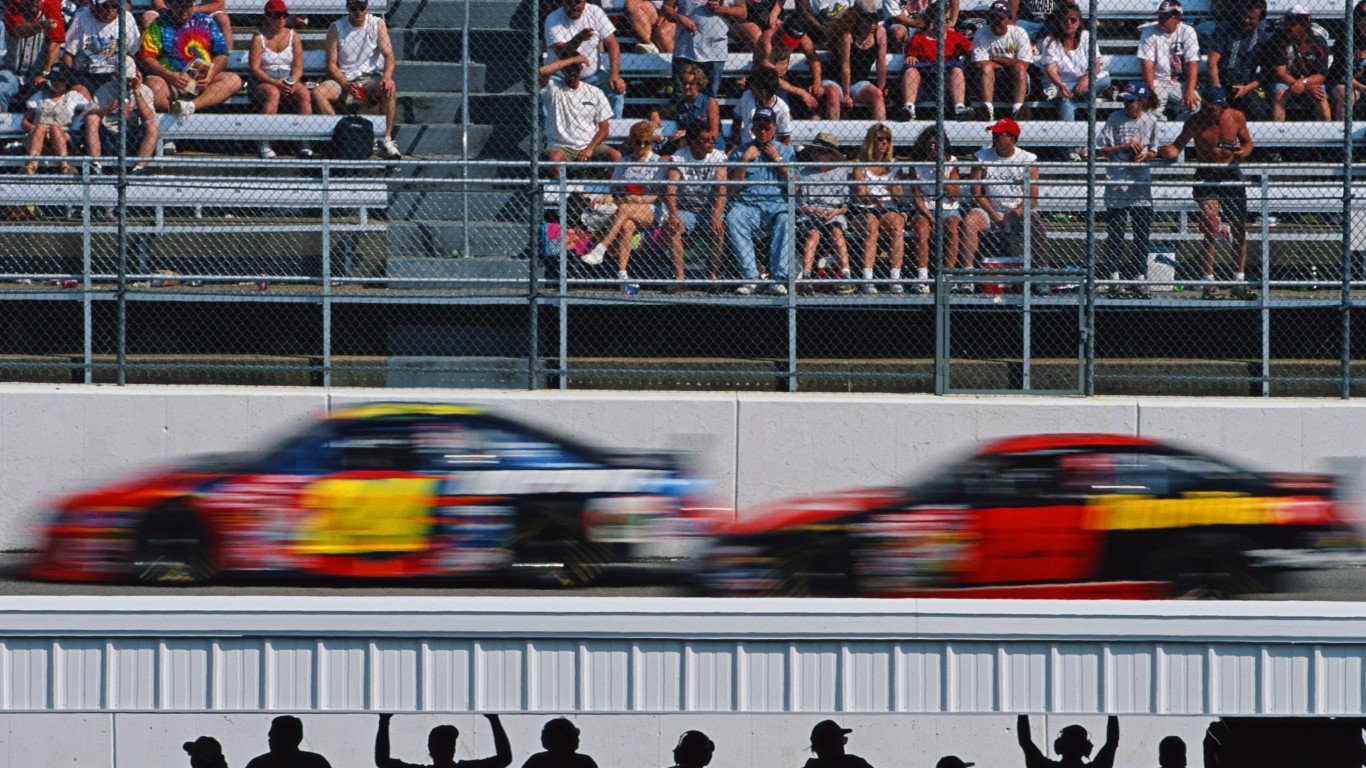
2001: Darlington Speedway
Race: NASCAR Busch Series
Steve Park was involved in a near-fatal accident during the NASCAR Busch Series at Darlington Speedway. When Park pulled on his steering wheel – part of a ritual of his – it came loose, having not been properly installed. He veered into the direction of the oncoming Larry Foyt, causing a T-bone crash. Park, who was airlifted to a local hospital, was left with a massive brain injury and several broken ribs, and the near-fatal crash marked the downturn of his career.

2002: Bristol Motor Speedway
Race: Busch Motor Series
Mike Harmon, practicing for a Busch Motor Series, experienced the same kind of crash at Bristol that Michael Waltrip had 12 years earlier, also slamming into a steel gate and crashing into a concrete barrier. Harmon’s car was split in two. Luckily for him, driver Johnny Sauter collided with the half of the vehicle Harmon was not in, and Harmon walked away from the wreck.
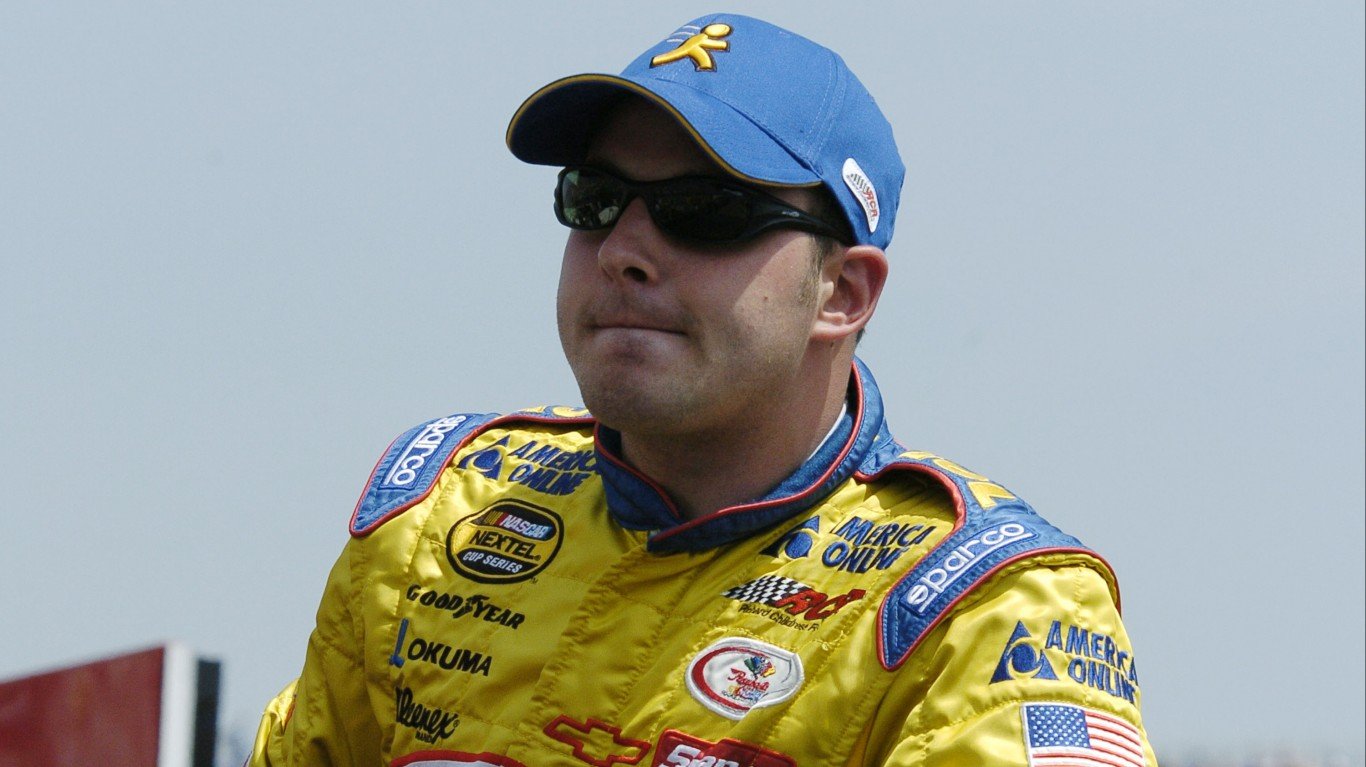
2002: Talladega Superspeedway
Race: NASCAR Nationwide Series
Johnny Sauter was involved in another NASCAR collision in 2002. During a NASCAR Nationwide Series race, he initiated one of the biggest wrecks in NASCAR history when he lost control of his car, which flipped and rolled. His misfortune resulted in a 33-car pileup.
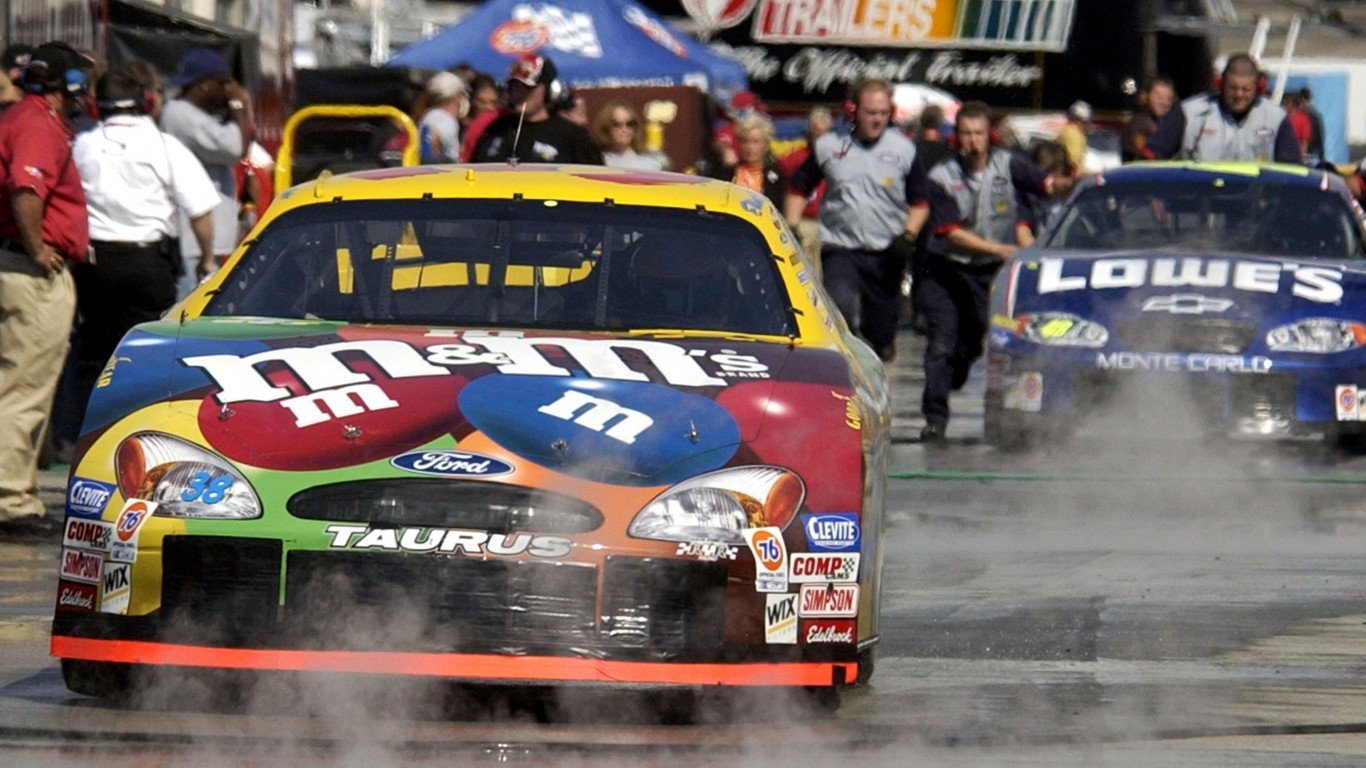
2003: Talladega Superspeedway
Race: Winston Cup
Talladega Superspeedway would bear witness to a spectacular crash one year later. On lap 181, Elliott Sadler, who was locked in an intense Winston Cup race with Dale Earnhardt, Jr., was bumped from behind by Kurt Busch. Sadler went airborne for several seconds and flipped over, slid across the grass, and flipped again when his car made contact with the pavement before it rested rightside up. A shaken Sadler was able to walk away from the wreck.
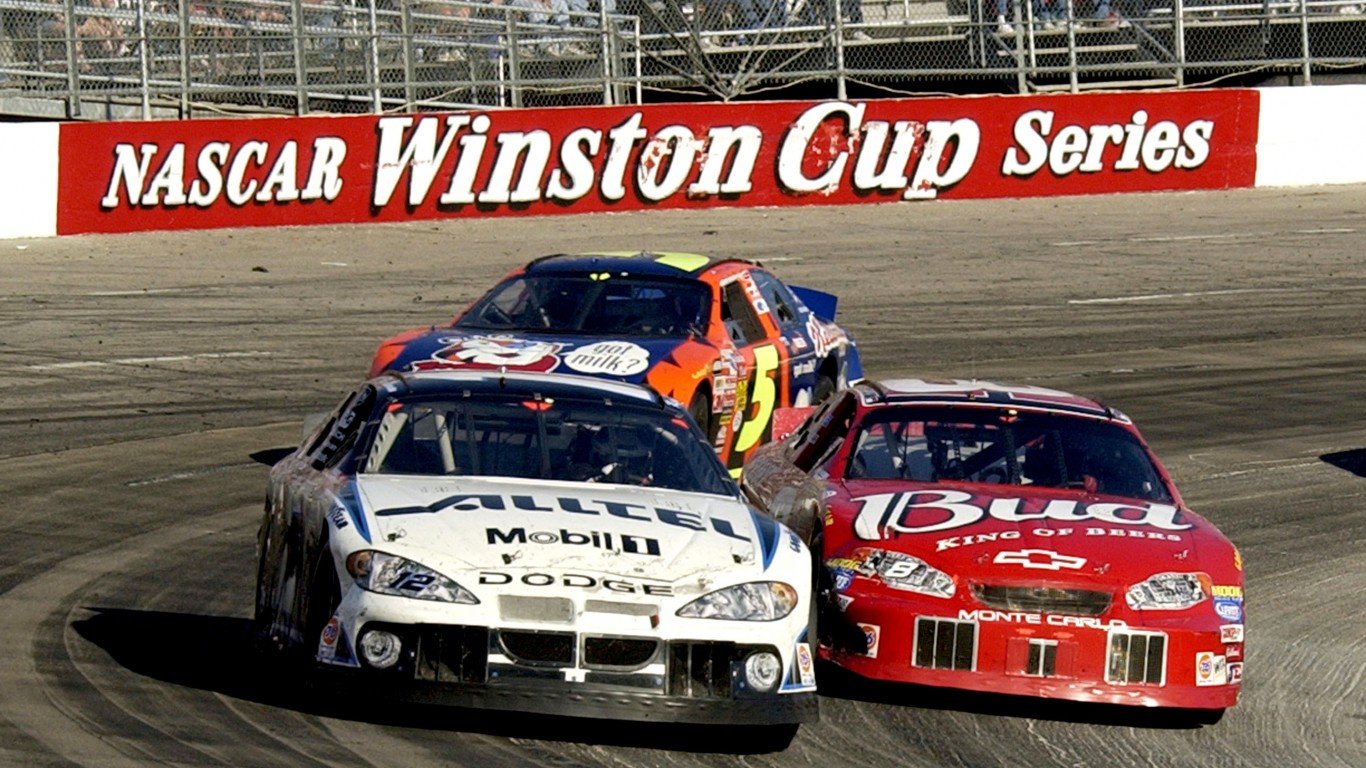
2003: Daytona International Speedway
Race: Daytona 500
Ryan Newman had been the 2002 NASCAR Rookie of the Year, but got off on the wrong foot in 2003 at the Daytona 500. Fifty-six laps into the race, Newman was pushed into the wall by a car driven by Ken Schrader. Both cars hit the wall and Newman’s vehicle lost a rear tire. His car then slid down to the infield going airborne and then nosedived before flipping several times and finally settling on its roof. Somehow, Newman walked away without major injuries.
2008: Las Vegas Motor Speedway
Race: NASCAR Sprint Cup Series
A crash during the NASCAR Sprint Cup Series at the Las Vegas Motor Speedway forced the raceway to improve protection barriers on the inside of the track. The crash occurred as Matt Kenseth was passing Dale Earnhardt, Jr. on lap 264 and brushed against Jeff Gordon. Gordon steered away from the field and slammed into a wall that did not have a steel and foam energy reduction barrier. The resulting crash dislodged the radiator from the chassis. Gordon later said he was responsible for the collision with Kenseth.
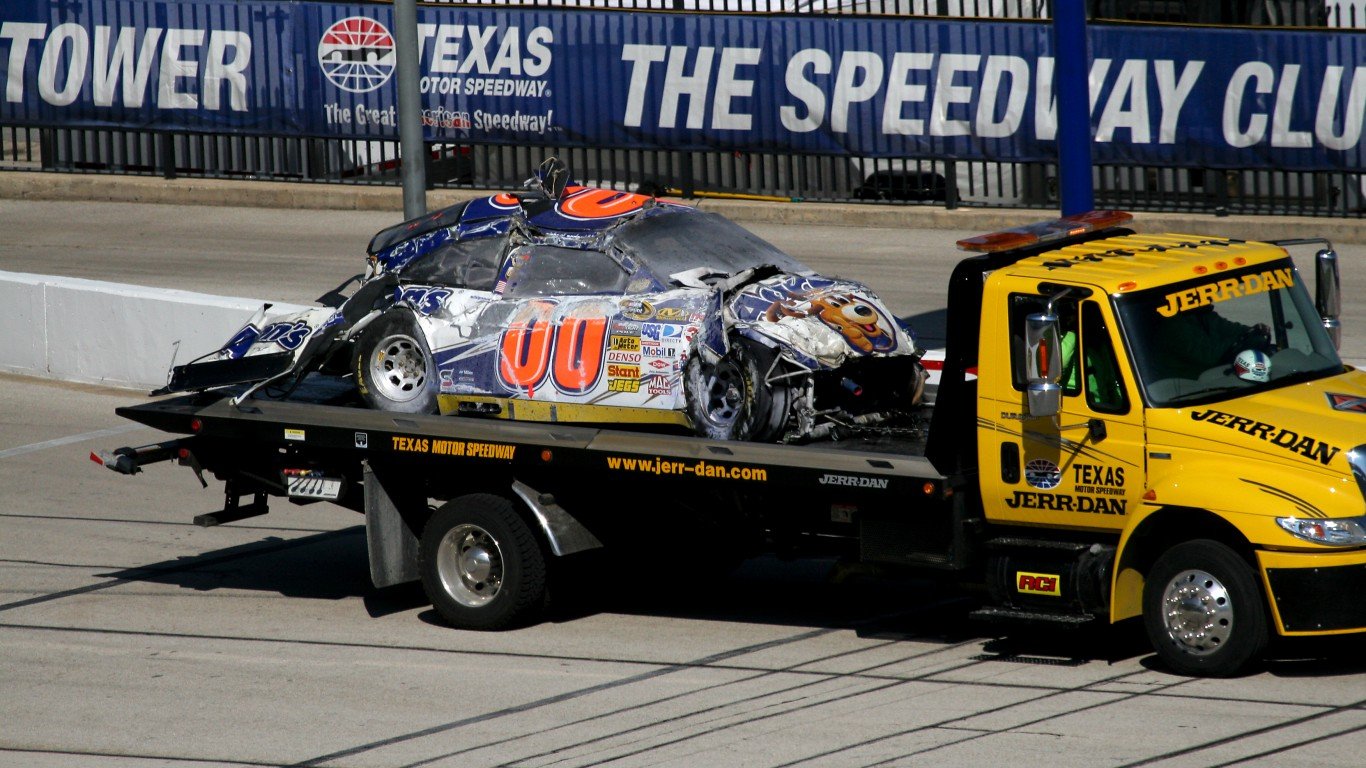
2008: Texas Motor Speedway
Race: Qualifying race
Michael McDowell, a rookie driving his qualifying lap in preparation for the Samsung 500 at the Texas Motor Speedway lost his control while coming out of a turn at nearly 200 mph and crashed into a wall. The car flipped over multiple times, slid on its roof for a few seconds, and then started flipping repeatedly before landing upright as a fiery wreck. McDowell was able to walk away from with minimal injuries.

2009: Talladega Superspeedway
Race: Aaron’s 499 NASCAR Sprint Cup Series
Carl Edwards was leading on the final lap of the Aaron’s 499 NASCAR Sprint Cup Series race at Talladega when disaster struck. As he jostled for position with Brad Keselowski, his car got bumped and went airborne, crashing into the protective fence and spewing debris into the crowd. Edwards’ car ended up in the infield and he walked across the finish line to complete the race to the applause of spectators. The crash looked horrible, but no one was seriously injured.
2009: Autódromo
Race: Corona Series: NASCAR Mexico
Carlos Pardo’s victory in the Corona Series: NASCAR Mexico at Mexico City’s Autódromo would cost him his life. He was on lap 97 when his car was bumped from behind, causing him to swerve toward a wall behind a pit lane at 120 mph. The car hit the wall sideways on the passenger side and exploded. He was rushed to a hospital by helicopter but eventually died. Pardo was awarded first because his car was in front when he crashed. It was his 10th career victory in the NASCAR Mexico series.

2012: Talladega Superspeedway
Race: Good Sam Roadside Assistance 500
The Big One, the phrase that describes a crash involving at least five or more cars in NASCAR stock car racing, happened at Talladega during the Good Sam Roadside Assistance 500. Tony Stewart was leading in the final lap when he hooked bumpers with Michael Waltrip. The entanglement caused Stewart to flip up and into oncoming cars, leading to a pileup of 25 vehicles. Matt Kenseth won the race.

2013: Daytona International Speedway
Race: Nationwide
Rookie driver Kyle Larson was maneuvering for position during the final laps of the Nationwide race at Daytona in 2013, held the day before the Daytona 500, when he was bumped from behind. The car’s momentum threw it against the catch fence. It disintegrated and debris flew into the stands, injuring 30 spectators. Miraculously, the dislodged engine block did not land anyone.

2014: Daytona International Speedway
Race: Budweiser Duels
A pileup occurred in the final lap of the qualifying race for the 2014 Daytona 500. As drivers vied for position, Jimmie Johnson was running out of gas when he was tapped by Jamie McMurray, sending Johnson into a spin that began the massive pileup. At one one point, Clint Bowyer went airborne, flipping several times before his car hit the ground on its wheels. As many as six cars were on fire bythe end of the crash. All of the drivers involved in the wreck were unhurt.

2015: Daytona International Speedway
Race: Dayton Coke Zero 400
Austin Dillon survived one of the most horrible crashes ever during the Daytona Coke Zero 400. The wreck occurred at the end of the race when a chain reaction of crashes touched off the “big one.” Dillon spun into a wall and flew up into the safety netting, sending debris into the stands. Five people were hurt. Denny Hamlin and Clint Bowyer were also involved in the crash. Dillon walked away from the wreck.
